No Balm
Julius Preuss was one of the few rabbi-doctors of old-school Jewish studies (Wissenschaft des Judentums) who could actually write prescriptions. Versed in Jewish learning, competent in Semitic philology, and trained in medicine at the University of Berlin, Preuss in 1911 published a 735-page tome called Biblical and Talmudic Medicine that capped a short life of intense research into anatomy, pathology, therapy, pharmacology, and dietetics in classical Jewish literature and especially the Babylonian Talmud, where medical discussions abound. He died two years later at the age of fifty-two, leaving behind a prominent rabbinic and academic family that counts among its ranks a chief rabbi, roshei yeshiva, and university professors. One of the founding fathers of the history of medicine, Karl Friedrich Jakob Sudhoff, eulogized Preuss as no less than a “master of historic criticism.”
Like a good German philologist, Preuss discerned better readings in medieval rabbinic manuscripts and sniffed out cognates of the original Hebrew and Aramaic medical terminology in Greek, Latin, Sanskrit, Persian, and Arabic. A comprehensive encyclopedia rather than a thesis-driven monograph, Biblical and Talmudic Medicine stillaffords a dizzying view of a late antique world seething with disease and teeming with medical experts, local doctors, accepted practices, and indigenous therapies, including those discussed, debated, collated, and collected in the Babylonian Talmud. If nothing else, the sheer scope, ambition, and seriousness of Biblical and Talmudic Medicine conveys something of the consequence of the history of medicine. We won’t be visiting the bloodletter anytime soon, nor will we be consuming honey-soaked wheat cakes in the event of heart palpitations (two therapies recorded in the Talmud). Yet, studying how our forebearers dwelled in their mortal bodies, struggled to care for the infirm, and even flourished, to the best of their abilities, against a world of pain gives us a precious view of how they understood themselves and the cosmos, how they navigated situations of life and death, and how far we’ve come.
Preuss was, of course, a product of his age, a time in the history of the history of medicine when contemporary medical conventions anachronistically dictated the terms of research, and orientalism sometimes skewed the results (“Expressions of emotions by Oriental people are much more intensive and explosive than those of the ‘cooler’ Westerners”). Talmud scholarship has also advanced over the past century. These advances include the comprehensive cataloging and digitization of medieval talmudic manuscripts, the honing of philological tools that help excavate the textual layers of the Talmud, the beginnings of a truly historical approach to Babylonian Jewry that does not rely naively on rabbinic hagiography, and the contextualization of the Talmud in its place of birth, the Western flank of the Iranian Sasanian Empire.
So, it is not surprising that Jason Sion Mokhtarian, who specializes in the Iranian context of the Babylonian Talmud, admires Preuss’s “proficiency of technical terms and avoidance of apologetics” but ultimately pronounces Biblical and Talmudic Medicine “outdated, especially in light of the advancements that have been made in rabbinics and the history of medicine.” His new book, Medicine in the Talmud: Natural and Supernatural Therapies between Magic and Science,aims to bring the field up to date.
Another one of Mokhtarian’s motivations in writing this book is that research into talmudic medicine has been dominated “by physicians, scientists, laypersons, and rabbis,” whose work has tended to be anachronistic and apologetic, “rather than by historians of late antique Judaism and Talmudists.” Reading such complaints, which show up early and often in the book, it is only natural to wonder what the present author—who is neither an MD nor a rabbi but the occupant of an endowed chair in Jewish studies and Iranian studies at an Ivy League university—will accomplish. Unfortunately, after burning through nearly half of its meager 118 pages of text, alternating between throat clearing and heralding the importance of the endeavor, Medicine in the Talmud somehow never ends up deploying the critical acumen, comparative insight, and theoretical sophistication necessary to advance the study of talmudic medicine.
Textual criticism and innovative interpretation are the hallmarks of academic Talmud scholarship. Yet, Mokhtarian barely does much of anything with his chosen texts, whether philological or exegetical. Instead, he mechanically translates and curtly summarizes talmudic passages, even strange and fascinating ones, without ever suggesting to the reader how they might be truly understood. Here is a typical sequence:
Shmuel also used his expertise to help others and was perhaps most renowned for his eye salves. In one tale in the Bavli, Shmuel wants to treat Rabbi Yehudah the Patriarch’s eye sickness, but when Rabbi refuses, Shmuel cleverly puts the medicine under the sage’s pillow so that it gets absorbed in his eyes while he sleeps:
“Shmuel the Astronomer was Rabbi’s physician. Rabbi was sick in his eye. Shmuel said to him: ‘I will paint medicine on your [eye].’ Rabbi said: ‘I cannot.’ [He said to him:] ‘I will indeed smear it on you.’ He said to him: ‘I cannot.’ [Shmuel] put a tube of medicine under his pillow, and he was healed.”
In this text, Shmuel acts as Rabbi’s physician—and does so successfully.
In one of his few critical readings, Mokhtarian tries to argue that later talmudic editors pseudepigraphically attributed a therapy for fever to the great sage Abaye’s mother, who is often portrayed in the Talmud as a medical expert. Unfortunately, this claim is pursued without supporting manuscript evidence (as it does not exist), without building a strong case (there isn’t one), and without an explanatory payoff.
Even leaving aside the fancy footwork of redaction criticism, Mokhtarian struggles to provide basic interpretations of standard talmudic passages, such as the following:
Ten things bring back sickness to the sick. . . . Some say also nuts, others add also melons. In the School of Rabbi Ishmael it was taught: Why are they called melons? Because they are injurious to the whole human body as swords.
Concerning this list, Mokhtarian writes:
The baraita does not elucidate why certain foods are harmful or beneficial—save for at the end, when it explains that the reason that melons are considered dangerous to the sick is because in Hebrew the word for “melons” [qishuin]sounds like the word for “injurious” [qishuin]. For the Tannaim, word-play is a determining factor for its recommendation regarding which foods to avoid.
Actually, the school of Rabbi Ishmael is not saying that melons (or cucumbers) are harmful because the Hebrew term for them sounds like the Aramaic word for “injurious.” Rather, the rabbis believed, for whatever reason, that melons were harmful and then punned on the word, whether out of sheer midrashic playfulness or to help commit the teaching to memory.
Mokhtarian’s ineptitude in textual scholarship led me to conduct a little investigation of my own, in the back matter of Medicine in the Talmud. There I discovered a “glossary of ailments,” which seems to recall Preuss’s index summarizing the results of his hard-won identifications but does not present Mokhtarian’s own findings. Instead it follows “the translations and Aramaic renderings in Michael Sokoloff’s Dictionary of Jewish Babylonian Aramaic.” (Sokoloff’s dictionary is a standard in the field and readily available to all, but it is not a specialized lexicon of medical terminology.) In the book’s bibliography, I found hardly a single item of Hebrew language Talmud scholarship listed—an astounding omission given the indispensability of Hebrew works of Talmud philology by the likes of founders such as J. N. Epstein, Shamma Friedman, Saul Lieberman, and David Weiss-Halivni and in recent research out of Israel, where academic Talmud continues to flourish. Finally, and even stranger given the author’s prior pronouncements, many of Mokhtarian’s claims are bolstered with footnotes to articles composed by rabbis, physicians, and even a pair of fourth-year medical students writing for The Albert Einstein College of Medicine Synagogue Compendium of Torah and Medicine.
After briefly considering and then dismissing the possibility that talmudic therapies are mainly based on biblical or Second Temple era precursors, Mokhtarian persuasively argues that the most relevant context for understanding medicine in the Babylonian Talmud is the broader medical discourse that was current in late antiquity. Repeatedly, he whets the reader’s appetite with reference to “the vast quantity of non-Jewish medical materials—for example, in Greek, Akkadian, Syriac, Mandaic, Pahlavi, New Persian, and Arabic—that scholars can use to situate the place of Jewish medicine within the wider Mediterranean and Iranian contexts.” But virtually every time this material is invoked, it is merely to encourage other researchers to do the work, rather than an occasion for Mokhtarian to reach conclusions himself.
Brief and tantalizing mention is also made of roughly contemporaneous Jewish magical texts, like one known as Harbe de-Moshe (Sword of Moses), and the many hundreds of clay bowls that Babylonian Jews inscribed with incantations. Unfortunately, Mokhtarian does little if anything to show how they actually illuminate the practice of medicine (or magic) in the Talmud. Typical, instead, is this term paper–like assessment of the similarities and differences between the Sword of Moses and talmudic parallels:
The Sword of Moses is a rich text with which to compare the Talmudic remedies. It contains a number of the same afflictions (e.g.,cataract, migraine, and diseased spleen), though, in terms of the therapies themselves, there appear to be fewer precise parallels. . . . While further research is needed to clarify the precise relationship between all these sources—including the incantation bowls—one can preliminary deduce that some of their traditions either share common origins or borrow from one another.

Since cataracts, migraines, and diseased spleens are common medical problems (see, for example, WebMD) and Mokhtarian has failed to find “precise parallels” or establish relationships between these sources, it is hard to say what he has done besides gesture in the general direction of texts that might or might not have something to do with one another. The deductions are not “preliminary”; they are nonexistent.
Curiously, despite stating in the preface that one of the reasons he wrote the book was “to try to integrate further the Aramaic incantation bowls into the field of Talmudic studies,” the few pages Mokhtarian dedicates to these fascinating—andincreasingly well-studied—artifacts are cursory, lazy, and, at times, just plain wrong. Generalities about parallels between the magic bowls and talmudic healing proliferate, as we are informed that “the bowls and Talmud reference many of the same afflictions,” and “scholars of the bowls are increasingly finding points of overlap between the bowls and rabbinic culture.” (Strangely, Avigail Manekin-Bamberger, the scholar who has done the most to relate the bowls to the Talmud, is never mentioned.)
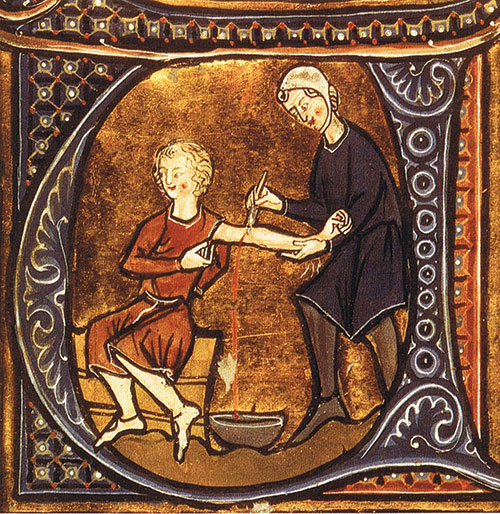
Limp references and factoids appear alongside unforced errors, such as the following explanation for why the people seeking protection in the bowl amulets were identified with their mothers’ names: “This was a more precise way of identifying a client, or . . . it reflects the central role of women in the production of the amulets.” In fact, there is virtually no evidence that Jewish women, who were generally illiterate in late antiquity, composed Jewish amulets, including incantation bowls. And the explanation that matronymics better identify the people in the bowls is a strange and unnecessary claim. Inexplicably, Mokhtarian appears to have never considered the most relevant fact: that in prayers of healing, Jews (presently and historically) identify the sick by including the person’s name together with their mother’s name, as did many non-Jews.
The sages of the Babylonian Talmud lived under a Persian dynasty closely associated with the ancient Iranian religion Zoroastrianism in an empire brimming with religious and ethnic groups. Given Mokhtarian’s training in ancient Iranian studies as well as Talmud, one would expect deep discussions of sources written in Zoroastrian Middle Persian, but there are none. Contextual analyses of other neighboring communities, like Syriac Christians, posture and gesture without ever quite arguing to any conclusion. Thus, after a presentation of the Syriac Book of Medicines produced by Mesopotamian Christians, Mokhtarian writes:
Whether these loanwords constitute evidence of a shared language between the Talmud and the Greco-Syriac-Iranian stream of medicine—and, if so, if this proves direct influences and exchanges of knowledge between these different systems and communities—are questions on which experts in the Greco-Syriac materials can hopefully shed more light.
The same thing happens with a text composed by another neighboring community—the Mandaeans, who lived near Jewish Babylonia in the Mesopotamian marshland and spoke a dialect of Aramaic that is close to talmudic Aramaic. After noting a few parallels, we again receive a languid summation pointing to scholarly work that others might someday perform: “These are just some of the therapies in the Mandiac Book of the Zodiac that one can compare to Talmudic medicine.”
Ultimately, Medicine in the Talmud tells us that “the Bavli was part of the global transfer of scientific and medical knowledge and discourse from the Mediterranean through Persia to India and China, and vice versa, in late antiquity.” This generalization may be true, since the Babylonian rabbis got their medical ideas from somewhere. But Mokhtarian clearly assumes it rather than proving it, and since he has not detailed the dynamics of such an exchange, it hardly tells us much of anything. How, indeed, did the talmudic sages participate in this “global transfer of scientific and medical knowledge”? Where and how did they study from or compete with (or perhaps even teach) other late antique medical experts and practitioners?
On one of the few occasions when Mokhtarian directly addresses questions of this sort, he ends up imagining that the third-century rabbi Shmuel attended “the medical schools in Nisibis.” Unfortunately, such an institution, even if it existed during late antiquity (a possibility that most scholars now reject), would only have been founded many years after Shmuel’s death.
The tireless Harvard Orientalist Wheeler McIntosh Thackston Jr. told generations of students that “there’s no tapping around philology,” meaning that one must learn the ins and outs of the relevant languages and literary traditions to arrive at textual truth. My own mentor, Yaakov Elman, spent years working to convince Talmudists to immerse themselves in the cultures and religions of Babylonian Jewry’s Sasanian context to freshly illuminate the Talmud. And yet, beyond the high walls of philology and the wide vistas of comparative research, there are other contributions that scholars can make in creatively sketching the thought worlds of the past through acts of historical imagination and theoretical daring.
Did the rabbis differentiate fundamentally between brewing drugs, reciting verses of healing, and intoning seemingly senseless incantations—all activities that are recorded together in the Talmud, sometimes even in a single set of therapies? The interrelations of magic, science, and religion have much to teach us about a society’s core values, its way of perceiving the world, its attitudes toward others, and its lurking fears. Generations of anthropologists, sociologists, philosophers, and religionists have all contemplated this complex trinity, with fascinating results.
Here, too, Mokhtarian is of little help. While he correctly points out that the rabbis themselves were interested in cataloging healing practices as either permitted acts of healing or forbidden acts of idolatry, he does not guide us through their lively debates. Rather, he oversimplifies matters to the point of misrepresentation by claiming that the rabbis permitted any practice that effectively healed. When trying to explain things from an outside perspective, Mokhtarian frequently adopts the language of rationality, practicality, and empiricism. Thus, he argues that the existence of multiple therapeutic options for the same ailment, and the old rabbinic practice of establishing certain amulets and amulet writers as reliable, shows how talmudic medicine is rational. At one point, he writes that “a magical therapy in the Bavli’s medical handbook—albeit ‘magical’—is nevertheless medical to the extent that its intent is to heal a physical affliction,” which explains precisely nothing.
Rather than rectifying the orientalisms of the past that ignore the internal cultural logic of magical practices, Mokhtarian ends up compounding them by imagining pre–Scientific Revolution talmudic medicine as thoroughly “empirical,” while simultaneously dismissing rabbinic magic as impractical and incoherent. Had he read the work of anthropologists like Stanley Tambiah and Yoram Bilu (who showed how to take native healing and ritual seriously without conflating them with protoscience) or absorbed the writings of scholars of ancient Jewish magic and healing like Gideon Bohak and Yuval Harari (whose works are cited in the book’s bibliography), Mokhtarian would have avoided these errors and might still have made a lasting contribution to the study of talmudic medicine. Instead, we are left with a book that is philologically sloppy, theoretically obtuse, and astonishingly lazy—and yet somehow manages to summon the chutzpah to dismiss earlier scholars for not having been trained in the fields of knowledge that Mokhtarian never actually puts to work.
A monograph written by a fully credentialed academic and published by a major American university press that is so obviously unfit for publication is a rare occurrence, or at least it used to be. As is often noted in the acknowledgments of academic books, it is ultimately the author who bears responsibility for a book’s failings. And yet, Medicine in the Talmud seems to me to be symptomatic of the dysfunctions of what a friend has jokingly called the “promotion-publication complex.” This includes the press editors who decide which monographs should be sent out for review and who should do the reviewing; the peer reviewers who, because of overwork or out of misplaced collegiality, are derelict in their duties; editorial boards that rubber-stamp the process; the professional academic journals that rarely publish critical reviews; the faculty promotion committees that judge books by their covers—or at least by their publishers—and, more broadly, a culture of knee-jerk, supportive collegiality that instead of offering regular, strong, and productive criticism, swaddles researchers in a disorienting haze of toxic positivity.
It’s enough to make one yearn for the days of scholars like Julius Preuss who, whatever their limitations, approached the task of understanding texts and the historical worlds from which they emerged as a profound responsibility rather than a professional game.
Suggested Reading
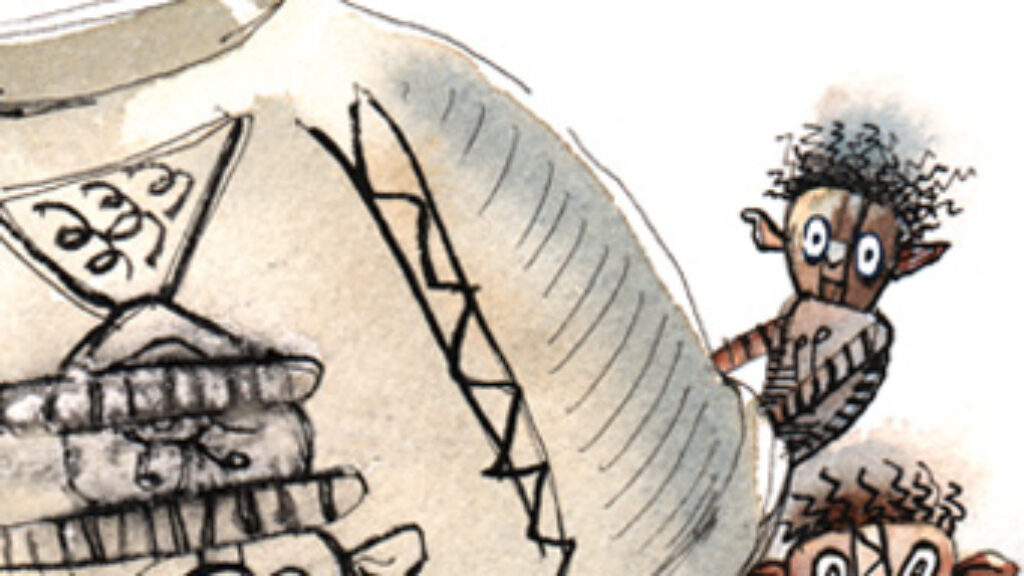
Common Clay
Virtually nothing of Babylonian Jewry of the talmudic period, from the 3rd to the 6th century C.E., has survived beyond the Babylonian Talmud itself to help contextualize or confirm the many things the text tells its readers.

Talmuds and Dragons
Like the medieval literature to which it pays homage, The Inquisitor’s Tale weaves in supernatural events and divine interventions, mythic beasts and wild peoples, and even entrées into medieval theology, all liberally peppered with puns and potty humor.
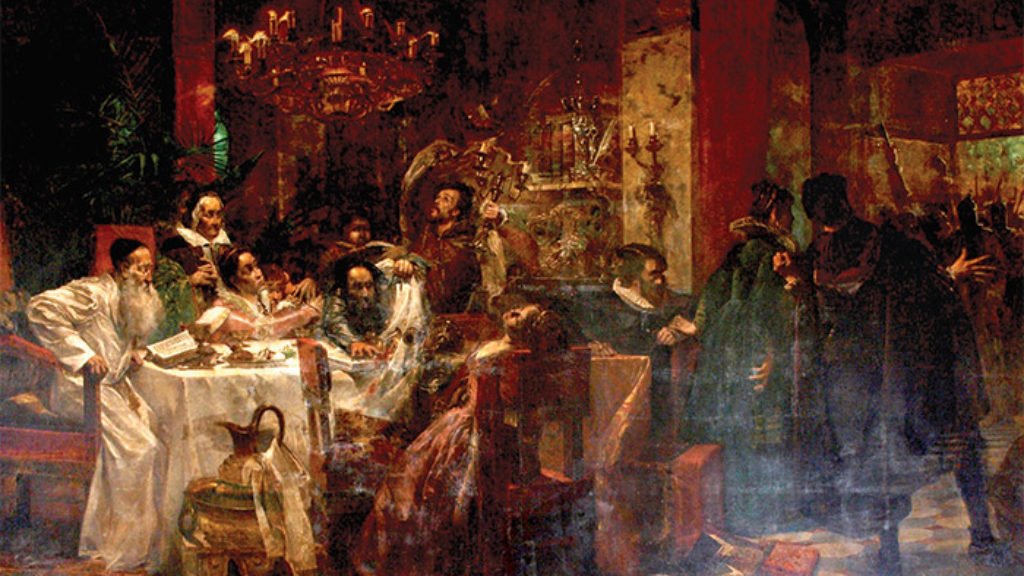
The Secrets of the Efod
How did it happen that some of the most brilliant anti-Christian polemics of the late Middle Ages were written by an (at least public) Christian?
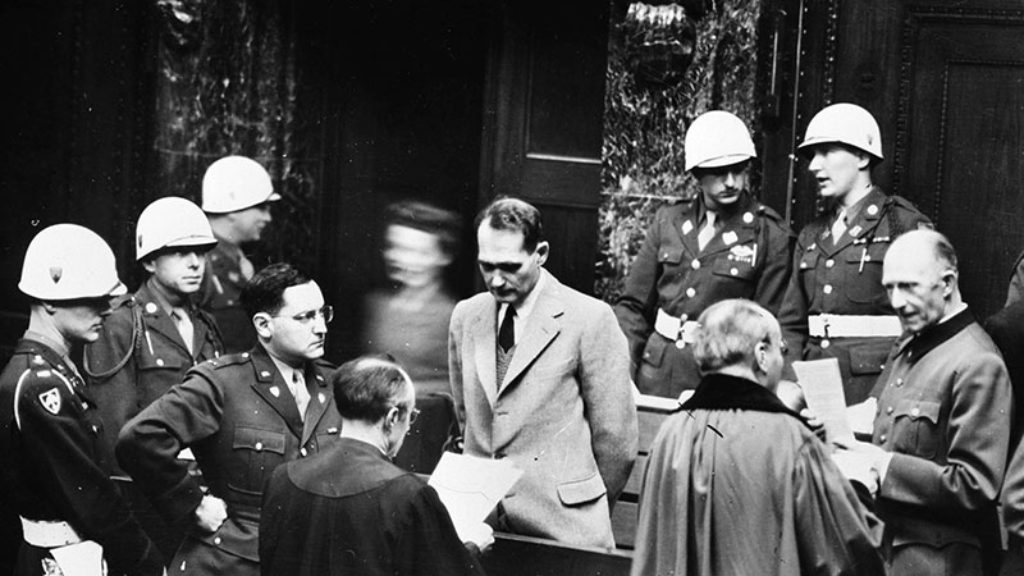
Psychology at Nuremberg
Both Kelley and Gilbert believed they could make a broad psychosocial argument despite the limited sample size, inconclusive tests, infighting, and lack of clear standards and definitions.
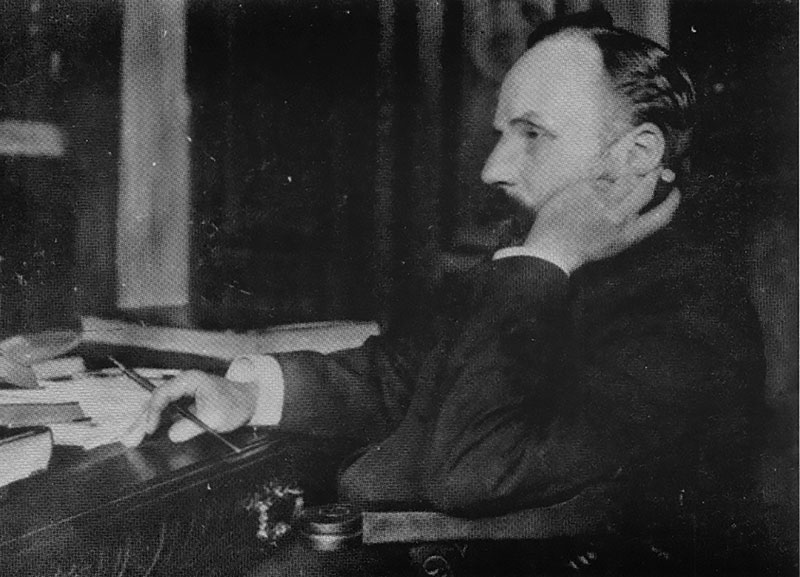
Comments
You must log in to comment Log In